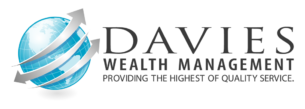Safe Harbor 401(k) Plans
Everyone is familiar with 401(k) plans, but not everyone knows they come in different flavors. There’s the traditional 401(k), of course. But there are also SIMPLE 401(k)s for small employers, 401(k)s with qualified automatic contribution arrangements (QACAs), and safe harbor 401(k)s.
The one thing all these special 401(k) plans have in common is that they’re generally simpler to maintain because they’re exempt from some or all of the complicated testing requirements that normally apply to traditional 401(k) plans. In order to qualify as a safe harbor plan, a 401(k) plan must meet special notice, contribution, vesting, and distribution requirements.
Special contribution requirements
In a traditional 401(k) plan you can make employer contributions though you’re not required to. In contrast, with a safe harbor plan, you must make a fully vested contribution. You have several options. First, you can make a contribution of 3% (or more) of pay on behalf of each eligible employee. This “nonelective contribution” must be made even for participants who aren’t actively contributing.
Alternatively, you can match employee contributions to the plan. If you use this approach, you must match each employee’s contributions dollar for dollar up to 3% of that employee’s pay, and match contributions from 3% to 5% at a 50% rate (the “basic match”). You also have the option of making an “enhanced” matching contribution that is at least as generous as the basic match and meets other requirements.
Your safe harbor contributions are generally subject to the same withdrawal rules that apply to employee 401(k) deferrals (that is, payouts are allowed only upon termination of employment, disability, death, hardship, or after age 59½).
Avoiding testing requirements
By using a safe harbor plan, you’ll automatically satisfy the actual deferral percentage (ADP) test that compares the average deferrals of your higher-paid and lower-paid employees. This test often limits the amount that your higher-paid employees can defer into the plan. If you make the basic safe harbor matching contribution, you’ll automatically satisfy the actual contribution percentage (ACP) test that applies to matching contributions. If you make additional matching contributions (including the enhanced match), you’ll avoid ACP testing if you don’t match employee contributions over 6% of pay, and any discretionary matching contributions don’t exceed 4% of pay. Finally, you’ll avoid top-heavy testing if you make only the safe harbor contribution to the plan.
Special notice provisions
You don’t have to use the safe harbor rules every year. But for any year you do want to use a matching safe harbor treatment, you must provide a notice to employees at least 30 days before the plan year starts. The notice must tell employees you’ll be using the safe harbor rules for the following year, describe the safe harbor contribution you’ll make, and explain the employees’ rights and obligations under the plan. [Your formal 401(k) plan document must also include appropriate safe harbor language. Note that legislation passed at the end of 2019 — the Setting Every Community Up for Retirement Enhancement (SECURE) Act — eliminated the requirement for the notice to be sent for nonelective safe harbor contribution plans.]
You can also have a flexible safe harbor plan that lets you decide as late as 30 days prior to the end of a plan year whether or not you’ll use the 3% nonelective safe harbor for that year. You might find this plan design useful if you want to see how your discrimination testing is progressing before you commit to a safe harbor contribution for the year. Alternatively, the SECURE Act now allows a plan to be amended as late as the end of the year following the plan year, but only if the nonelective safe harbor contribution is 4%.
QACAs
A QACA is a 401(k) plan with an automatic enrollment feature that avoids ADP, ACP, and top-heavy testing that meets certain requirements. While most of the rules applicable to safe harbor plans also apply to QACAs, there are some notable exceptions. Under a QACA, an employee who fails to make an affirmative deferral election is automatically enrolled in the plan. An employee’s automatic contribution must be at least 3% for the first two calendar years of participation and then increase 1% each year until it reaches 6%. You can require an automatic contribution of as much as 15%. Employees can change their contribution rate, or stop contributing, at any time (and get a refund of their automatic contributions if they opt out within 90 days).
| SIMPLE 401(k) | Safe Harbor 401(k) | QACA | |
|---|---|---|---|
| Which employers can adopt? | All nongovernmental employers with no more than 100 employees who earn $5,000 or more (must be only plan) | All nongovernmental employers | All nongovernmental employers |
| Employee elective contribution limit (2022) | Lesser of $14,000 or 100% of compensation; additional $3,000 catch-up if age 50 or older | Lesser of $20,500 or 100% of compensation; additional $6,500 catch-up if age 50 or older | Lesser of $20,500 or 100% of compensation; additional $6,500 catch-up if age 50 or older |
| Required employer contribution (compensation limited to $305,000 in 2022) |
·Dollar-for-dollar match up to 3% of compensation OR 2% of compensation to each eligible employee ·100% vested |
·Dollar-for-dollar match up to 3% of compensation, 50% match above 3% to 5% (enhanced match also available) OR At least 3% of compensation to each eligible employee ·100% vested |
·Dollar-for-dollar match up to 1% of compensation, 50% match above 1% to 6% (enhanced match also available) OR At least 3% of compensation to each eligible employee ·100% vested after 2 years |
| Discrimination testing | Exempt | Exempt from ADP test; exempt from ACP test if you make the safe harbor required contribution, don’t match contributions over 6% of pay, and limit discretionary match to 4% of pay | Exempt from ADP test; exempt from ACP test if you make the safe harbor required contribution, don’t match contributions over 6% of pay, and limit discretionary match to 4% of pay |
| Top-heavy testing | Exempt | Exempt if employer contribution limited to safe harbor required contribution; otherwise required | Exempt if employer contribution limited to safe harbor required contribution; otherwise required |
| Additional employer contributions permitted? | No | Yes (discrimination testing may be required); generally 3-year cliff or 6-year graded vesting | Yes (discrimination testing may be required); generally 3-year cliff or 6-year graded vesting |
As with safe harbor plans, you’re required to make an employer contribution: either 3% of pay to each eligible employee, or a matching contribution, but the match is a little different — dollar for dollar up to 1% of pay, and 50% on additional contributions up to 6% of pay. You can also require two years of service before your contributions vest (compared to immediate vesting in a safe harbor plan). And if you select certain default investments to hold employees’ automatic contributions, you’ll generally be relieved of fiduciary responsibility for any losses your employees incur while in those investments.




Leave a Reply